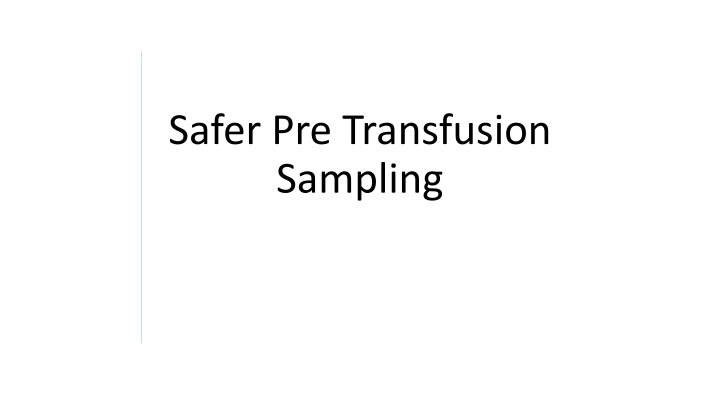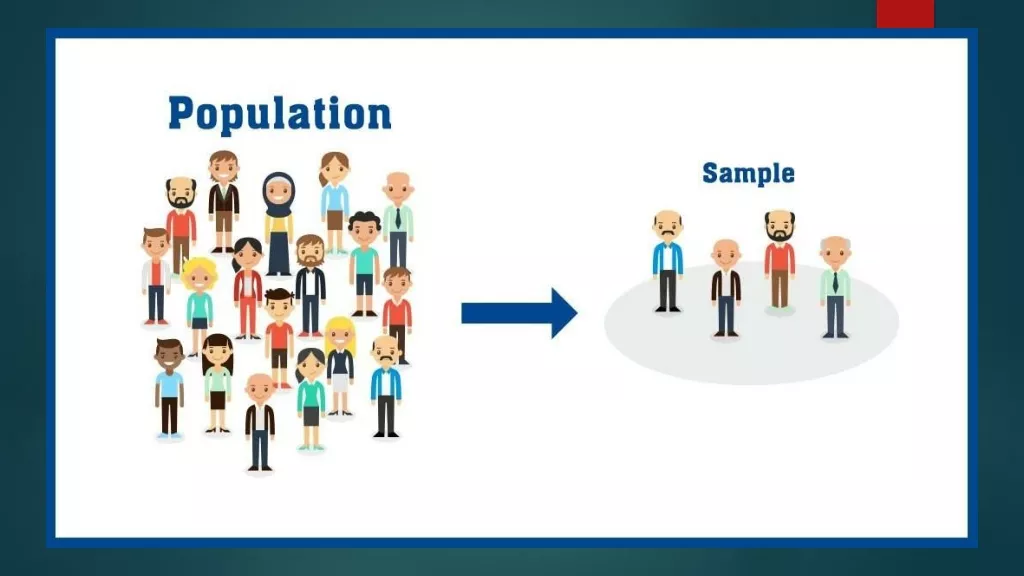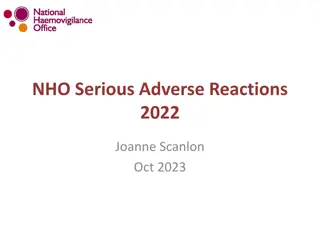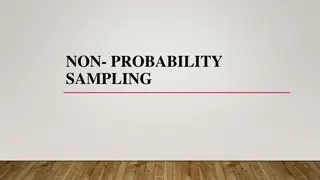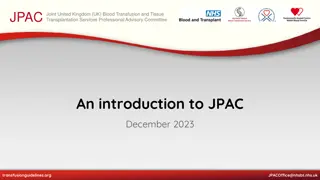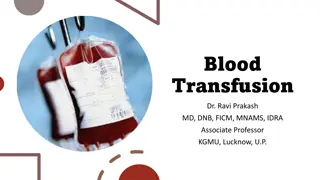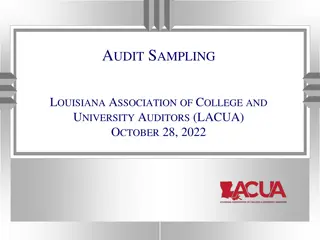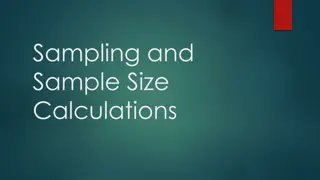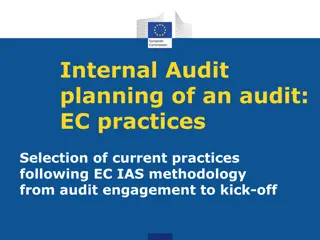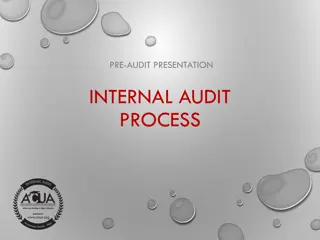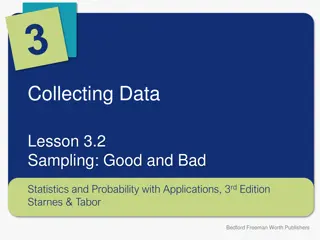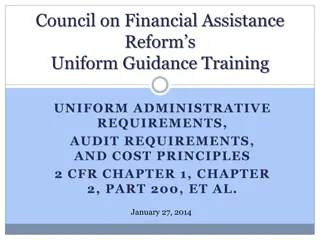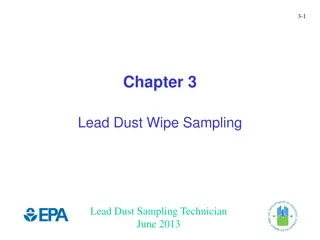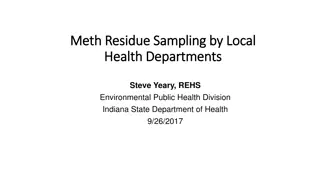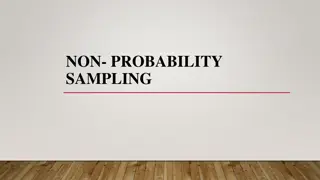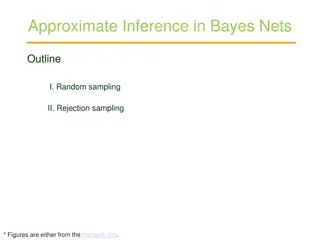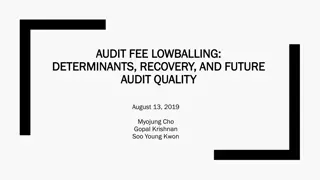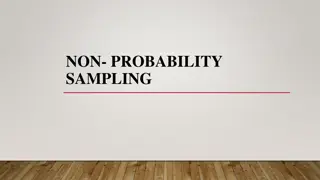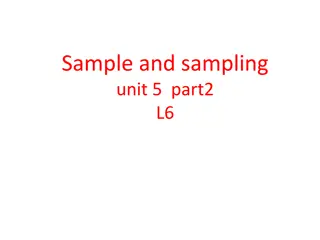Audit of Pre-Transfusion Sampling Process in Healthcare
An audit was conducted on the pre-transfusion sampling process within a healthcare board, revealing issues such as unnecessary duplicate samples, misidentification of patients, and delays in obtaining confirmatory samples. The audit highlighted the importance of secure electronic patient identification systems and proper procedures to ensure accurate blood transfusions and patient safety.
Download Presentation

Please find below an Image/Link to download the presentation.
The content on the website is provided AS IS for your information and personal use only. It may not be sold, licensed, or shared on other websites without obtaining consent from the author.If you encounter any issues during the download, it is possible that the publisher has removed the file from their server.
You are allowed to download the files provided on this website for personal or commercial use, subject to the condition that they are used lawfully. All files are the property of their respective owners.
The content on the website is provided AS IS for your information and personal use only. It may not be sold, licensed, or shared on other websites without obtaining consent from the author.
E N D
Presentation Transcript
Safer Pre Transfusion Sampling
October 2018 a letter to the Medical Director from CMO requiring assurance about pre transfusion processes within the health board. Situation
Unless secure electronic patient identification systems is in Unless secure electronic patient identification systems is in place a second sample should be requested for confirmation of the ABO group of place a second sample should be requested for confirmation of the ABO group of a first time patient prior to transfusion, where this does not impeded the a first time patient prior to transfusion, where this does not impeded the delivery of urgent red cells or other components delivery of urgent red cells or other components Background
A Junior doctor attended a patient in EU to take pre transfusion samples for Group and Save A request form had not been completed in advance and therefore it was not possible to positively identify the patient against the details on the form The doctor took two samples during the same clinical encounter and as they were aware that the laboratory would require samples taken from separate phlebotomy episodes labelled one 17.15 and the second 17.25 Background The first sample was tested and grouped as B Rh positive . The declaration on the second form had not been signed and as a result was rejected by the lab. A third sample was requested and was taken by a different clinician. The third sample was tested and grouped as A Rh positive Subsequent investigation demonstrated that the initial two tests had been taken from the wrong patient
Audit of Duplicate Samples All duplicate samples sent to the lab between 14-21 October were audited 202 patients had 2 or more pre transfusion samples taken Assessment 5 patients had 3 or more samples taken 1 patient had 5 samples taken 53% of duplicate samples were taken unnecessarily
Audit of Duplicate Samples Assessment 64.8% patients had the first and confirmatory sample taken by the same individual 93.6% of confirmatory samples were recorded as being taken within 30 minutes of the initial samples
16% of patients who had required a confirmatory sample (15/94) had blood issued following confirmatory group & save sampling Assessment 1 patient triggered a massive haemorrhage protocol None of the remaining 14 were transfused with 4 hours
Survey of Junior Doctors 7 questions, 3 mins to complete, 35 responses in 1 week Are you aware of the reasoning behind requiring a confirmatory Group & Save sample for new patients? Assessment How would you determine whether a confirmatory sample is required? Do you feel there is a pressure from either seniors or other colleagues in not following the confirmatory sample policy? Do you feel the confirmatory sample policy is sometimes ignored? Do you feel with better education/information, full compliance of the confirmatory sample policy could be achieved and sustained? Further comments/suggestion
Survey of Junior Doctors 83 % wereaware of why a confirmatory sample was required 60% said there was pressure from colleagues to not follow the confirmatory sample procedure Assessment 91% said that the Confirmatory Sample Procedure is sometimes ignored 80% said that better education / information would not achieve full compliance with the procedure.
Executive Safety Notice to All staff - Some improvements already demonstrated Currently exploring the option of making blood group more visible on the system Assessment Currently exploring the option of developing a patch that will identify all duplicate samples received in the lab within a defined period of time
1 Eliminate Second Sample 2 Maintain status quo and reinforce with education 3 Reject second samples undertaken within 30 minutes and continue to re educate 4 Reject second sample if taken within 2 hours and continue to re educate Recommendations 5 Reject second sample within 8 hours if blood not requested. If blood is requested then the Lab would contact the requesting clinician and request a further sample.
